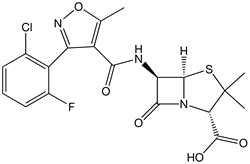Below are the answers to the case studies provided by Consultant Podiatrist Frank Webb that featured on pages 145-146 of this issue.
Case study 1
Diagnosis
Hallux limitus affecting first metatarsal phalangeal joint with osteophyte formation and joint space narrowing, which has been present for a number of years. Incidence of a stress fracture in the past six to 12 months. On closer discussion with the patient, he informs that he had pain in the foot approximately nine months ago with no visible swelling but quite marked tenderness.
X-rays show a displaced fracture with bone callus formation and signs of bone healing of the second metatarsal. Due to the second metatarsal being displaced and shortened, increased pressure is put on and around the first metatarsal phalangeal joint, resulting in the increasing discomfort in this area.
Treatment
The hallux limitus could either be treated locally with orthotics to redistribute pressure, or with cortisone injections for symptomatic relief. Surgery would involve cheilectomy and/or fusion of the first metatarsal phalangeal joint.
Case study 2
Diagnosis
The extensive changes at the first metatarsal phalangeal joint and interphalangeal joint of the hallux are due to large punched-out erosions related to gout. A thick discharge was diagnosed as gouty tophi on microscopy. There is virtually total loss of the distal and intermediate phalanges of the fourth toe due to gouty erosions. Swabs were taken for culture and sensitivity of the wound, as well as samples of fluid to identify infecting bacteria. Bloods were taken to establish the status of his urate.
Treatment
Debridement of the gouty tophi from the ulcerated site to promote healing. Unfortunately, the patient was not a suitable candidate for allopurinol due to intolerance, so his water tablets were reduced to try and control the amount of fluid loss. Surgical shoes were provided to protect his feet. The patient re-ulcerated, however, due to gouty tophi, which then required debridement from the ulcerated site to promote healing. This was done after the soft tissue infection was controlled using intravenous antibiotics, namely flucloxacillin and amoxicillin in conjunction with metronidazole.
Case study 3
Diagnosis
There is a fusion to his first metatarsal phalangeal joint, osteoarthritis to the second metatarsal phalangeal joint, osteomyelitis affecting the third metatarsal with marked loss of the head and part of the base of the proximal phalanx of the third. Periosteal reaction is extending down the shaft. There is sequestra formation and the early formation of involucrum. Calcified vessels are also noted. There is some periosteal reaction at the base of the third phalanx also.
Magnetic resonance scans were used to show the level of bone oedema in order to give a good indication of the extent of the infected bone before surgery. STIR image is shown, which clearly demonstrates a cross-sectional view of the foot showing the third metatarsal to be white showing oedema (infection) whereas the other metatarsals appear grey.
Treatment
Patient was admitted for intravenous antibiotics (clindamycin and ciprofloxacin). The surgical procedure involved removal of a third ray under local anaesthetic after the draining of an abscess three days earlier.
Case study 4
Diagnosis
Fracture of calcaneus with osteomyelitis evident, with loss of bone and irregular cortex--early periosteal reaction.
Treatment
Treatment was to place the patient in a removable cast.
Attempts were made to address his glucose levels as well as his renal function. This was extremely difficult due to poor compliance, diet and lack of attention to restricted fluid intake. This caused problems with the amount of fluid retention in the foot.
He ultimately developed methicillin-resistant Staphylococcus aureus (MRSA), which was located in the bone on biopsy. The patient was taken to theatre for debridement of the osteomyelitic calcaneus, with a plan to take him at a later stage for fusion. At the time of debridement the wound was cleaned and packed with gentamicin beads as well as a Collatamp (gentamicin collagen dressing).
Initially the patient made good progress. He eventually went on to fixation of the calcaneus, which failed, and now awaits further surgery.
Frank Webb is Consultant Podiatrist in the Department of Podiatry and Foot Health, Hope Hospital, Salford
COPYRIGHT 2004 S.B. Communications
COPYRIGHT 2004 Gale Group



